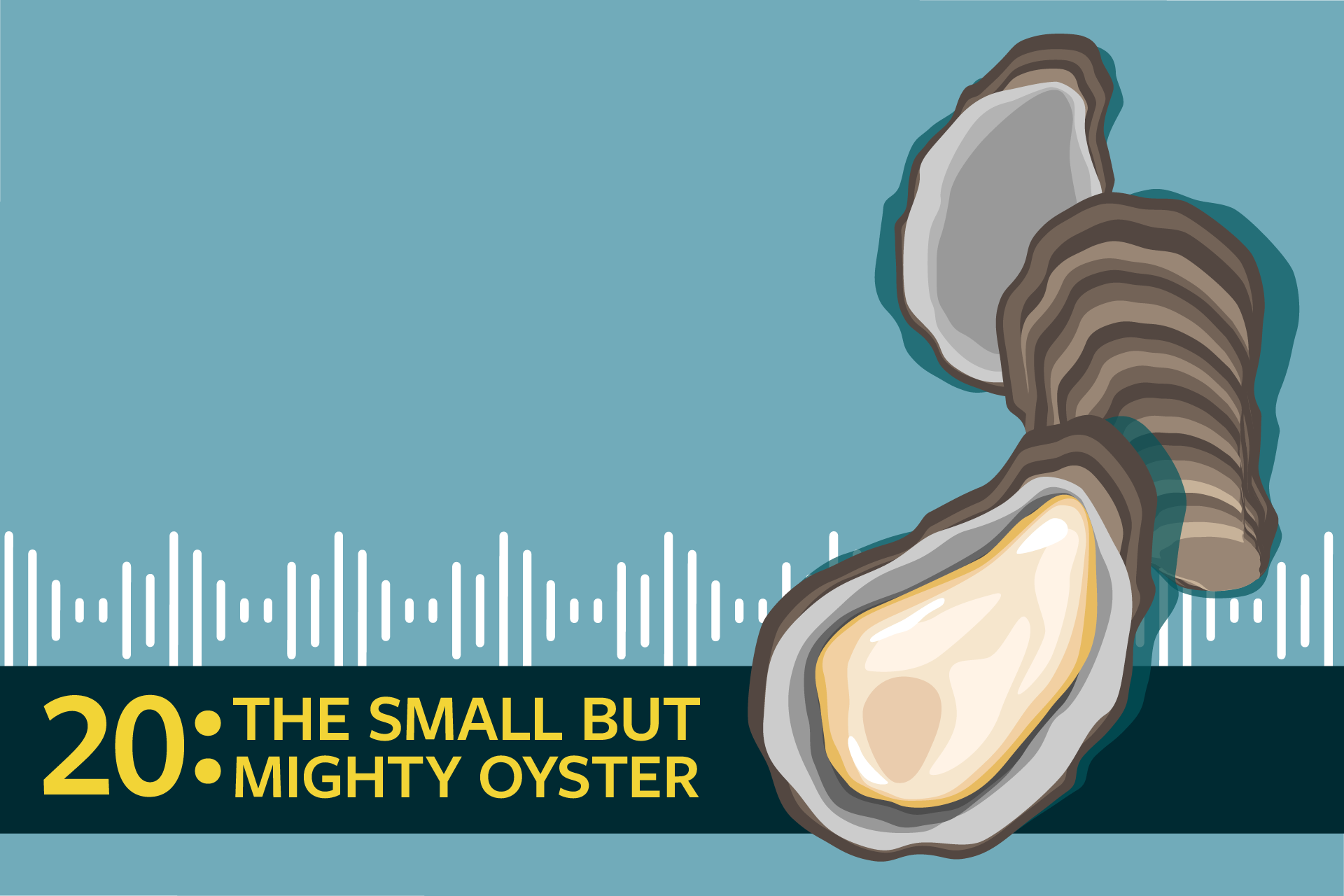Oyster farming is the good kind aquaculture
Farmed fish and shellfish — usually presented as very sustainable protein options — represent an increasing percentage of the seafood we eat. But as we have detailed in our “Foodprint of Farmed Seafood” report, and our podcast episodes on both shrimp and salmon, lots of aquaculture is problematic, environmentally and otherwise. The possible exception to this: the farming of bivalves, like scallops, clams, mussels and oysters.
When we visited Hog Island Oyster Co. for the most recent episode of our podcast, “What You’re Eating,” tour guide Marlon McLaughlin described oyster farming this way: “I actually think that ‘farming’ is a little bit of a misnomer. It’s really more like oyster ranching, right? We’re really just leasing access to that phytoplankton for those oysters to graze upon. We’re not adding any food or fertilizer. We’re grazing.”
While large-scale finfish and shrimp farms require tons of inputs — mostly food, but also antibiotics to address the diseases that spread rapidly in overcrowded pens — smaller oyster operations, the norm in the U.S. for this kind of aquaculture, can have the opposite environmental effect. Oysters are filter feeders, sucking in water, taking in whatever microorganisms they need and then spitting the rest back out. Through this process, they’re feeding themselves while also cleaning up the very water they sit in. Add to this their briny deliciousness and their pop culture status as a hot girl snack of recent summers, and you’ll find plenty of reason to get excited about oysters.
Want to know what it looks like to grow these mysterious creatures responsibly? Or how an oyster, whether a Hama Hama or a Wellfleet, is categorized and named? Looking for guidance on ordering oysters to shuck and eat at home and how much to worry about disease-causing bacteria, like Vibrio, that you have heard about in the news? We’ve got answers from oyster expert Rowan Jacobsen, marine scientist Christopher Gobler and the crew at Northern California’s Hog Island Oyster Co.
Get the latest food news, from FoodPrint.
By subscribing to communications from FoodPrint, you are agreeing to receive emails from us. We promise not to email you too often or sell your information.
Top photo courtesy of Jerusha Klemperer for FoodPrint.
More Reading
Salmon hatcheries: Unsuccessful conservation, insufficient regulation, and poor animal welfare
September 16, 2025
Why farmed seafood deserves an ethical debate
September 8, 2025
Think you’re eating local seafood? Beware of 'local-washing'
May 21, 2025
When bycatch is on the menu
December 12, 2024
The quest for more sustainable caviar
July 3, 2024
Celebrating the Black history of oysters with chef Jasmine Norton
June 21, 2024
A new report sheds light on the problems behind our imported shrimp
March 27, 2024
The collapse of fishing giant Blue Harvest exposes the weakness of catch share policies
November 20, 2023
Can We Really Eliminate Invasive Species by Eating Them?
July 19, 2023

